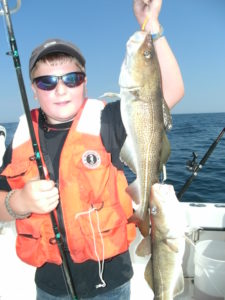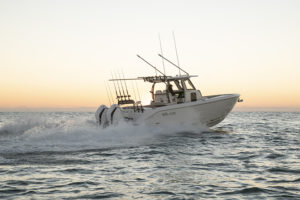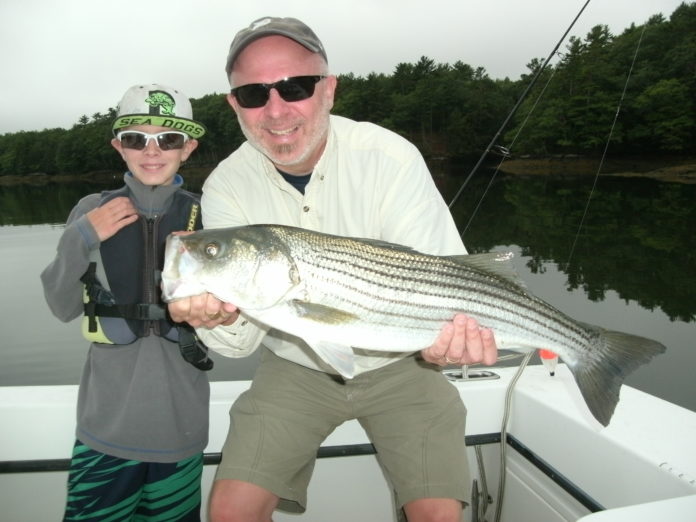Tips for taking fish photos that will shine on social media
By Barry Gibson
The first thing I want to admit, right up front, is that I’m not a professional photographer. Not even close. Start talking about f-stops and shutter speeds, and my eyes glaze over.
However, I have had hundreds of fishing photos published over the years, including a dozen or more magazine covers, but that’s mostly attributable to the fact that I take loads of photos when I’m out fishing, and that the cameras I’ve owned have had “auto” settings that do all the thinking for me.
Outside of the technical aspects of outdoor photography (there are good books on it), I’ve picked up a few hacks from the pros that will likely help even a rank amateur produce some nice pictures, and allow the photographed fish to swim away in reasonably good health.
Shoot Fast
The top consideration when shooting a grip-and-grin fish photo, if the fish is to be released, is to get it done fast. Most fish can easily survive out of the water about the length of time you can hold your breath, so that’s a rule I try to stick to on my boat. If the photo can’t be taken within 30 seconds or so, that fish is headed back over the side no matter how big it is. A 10-pound snook simply can’t wait for someone to search through his or her bag and jacket pockets for a camera or phone. If you want to take photos, be prepared to fly into action quickly.

Along this same line, resist the temptation to try and have a child, or adult who has little or no experience, hold the fish he or she just caught in order to display it for the photo. A majority of the time the fish will get dropped onto the deck or ground, potentially injuring itself and burning up precious seconds out of the water. Instead, you or another experienced person should immediately grasp the fish, and sidle right up next to the catcher. Two-person fish photos are, in many cases, far more pleasing and fun than a solo shot of a grimacing angler holding a fish for the first time.
How the fish is held is important, too. Some fish without much in the way of teeth, such as striped bass, can be gripped by the lower jaw, but do that with one hand while supporting the fish’s belly (or just behind it) with your other hand so that it’s more horizontal then vertical. This way there’s less stress on the internal organs, as well as the fish’s jaw.
Forget those good-buddy freshwater bass pros on TV that always display a big ’un by just gripping the lower jaw and yanking backwards on it—it’s no good for the fish.
Flash Me
As far as taking the actual photo goes, my top guideline would be to always set the camera (or phone if it has this feature) on “fill flash” regardless of time of day or light conditions. This setting will make the flash go off for every shot. Most of the time this will eliminate the dark shadows obscuring people’s faces, especially on a cloudy day or if the sun is behind the person you are photographing.
Even with the fill flash, it’s usually best to try and position the subject and fish with the sun behind you (the photographer) and illuminating the subject.
Once in a while you’ll end up with a “blown out” photo from the added reflection of the flash bouncing back off the fish and/or person, particularly in bright sunlight, but in the majority of cases the flash will greatly improve the quality of the picture.
Get Sideways – and Smile!
Another rule of thumb I go by, especially when there’s just one person in the photo, is to shoot vertical. A lot of grip-and-grin shots lend themselves better to a vertical format photo rather than the standard horizontal view, especially when there’s only one person in the shot. It’s easy, just turn the camera or phone on its side, and click away. You’ll be less likely to crop the top of the person’s head off, and the subject and fish he or she is holding will often fill out the photo better. Try it.
And, get your subject(s) to smile for the camera! Smiles and grins make all the difference. If the subject is a young person, I’ll usually say something like “Your girlfriend (or boyfriend) is going to be so proud of you!” just before I click the shutter. That usually elicits a grin. For older males and females I simply tell them “Think sexy thoughts!” Same reaction. Works every time.
Finally, be sure you have followed all the fishing regulations before you post that photo on social media such as Facebook or Instagram. There have been cases where people have caught and photographed a fish inadvertantly taken out of season and posted it on social media, complete with a description of the event for all to see … which has resulted in a visit from a marine patrol officer or game warden.



